Issue 15 (27). Vol 2
DOI: 10.33098/2078-6670.2023.15.27.2.19-30 Demyanchuk T. Soviet criminal-executing system as a tool of totalitarianism
Demyanchuk T. Soviet criminal-executing system as a tool of totalitarianism
Purpose. The purpose of the study is to reveal the legal foundations of the formation of the Soviet criminal-executive system and its qualification as a tool of totalitarianism. Methods. The article uses a set of principles and methods of scientific knowledge, in particular the principles of objectivity and historicism, as well as methods of analysis and synthesis, generalization, legal, formal-legal, system-historical, retrospective analysis, dialectical, phenomenological, hermeneutic and systemic. A theoretical analysis of the concepts of «totalitarianism» and «criminal-executive system» was carried out, approaches to understanding their content among Ukrainian and foreign scientists were considered. Results. The author’s understanding of the concept of the criminal-executive system was formed as a set of authorities that were responsible for the execution of criminal punishments and probation and implemented not only an educational and correctional function, but they were a tool of the political regime in the fight against internal opposition. The Soviet criminal-executive system was directly involved in the implementation of the so-called «great terror», and until the 1960s it had a distinct correctional and labor character. Confirmation of the totalitarian character of the criminal-executive system of the Soviet era are the very norms of law that regulated its formation and development. Thus, the ideologues of Bolshevism immediately pointed out the punitive nature of criminal legislation. In the 1930s, in the context of the adoption of emergency legislation and, in particular, the adoption of a number of amendments to the Criminal and Criminal Procedure Codes, the Correctional Labor Code of 1925 lost legal force, and correctional legislation was regulated by the norms of emergency law. The system of execution of punishments was finally regulated only with the adoption of the Correctional and Labor Code of the Ukrainian SSR in 1970. The latter approved a harsh, inhumane system, which focused its attention on the complete exploitation of persons serving sentences. A conclusion has been made about the perspective of studying the Soviet criminal-executive system, in particular in terms of fixing numerous crimes against persons who were serving sentences, rehabilitation of victims of totalitarianism, as well as improvement of the current legislation of Ukraine. Originality. The regularities of the formation and evolution of the criminal-executive system of the Ukrainian SSR have been established, and the signs that allow it to be qualified as totalitarian have been determined. Practical significance. The results of the research can be used in the process of historical and legal research, preparation of special courses.
Key words: criminal-executive system, totalitarianism, rule of law, Ukrainian SSR, legal system, human rights, correctional labor legislation.
References
1.Bandurka, O, Denysova, T. & Trubnykov, V. (2002). Obshaya teoriya socialnoj adaptacii osvobozhdennyh ot otbyvaniya nakazaniya (pravovoj i socialno-psihologicheskij analiz ugolovno-ispolnitelnoj politiki po reabilitacii osuzhdennyh) [General theory of social adaptation of those released from punishment (legal and socio-psychological analysis of the penitentiary policy for the rehabilitation of convicts)]. Kharkov; Zaporozhe: NUVDZHU. (in Russian)
2. Kokuryn, A. Y., Petrov, N.V. (Comps.). (2000). HULAH (Hlavnoe upravlenye laherei). [GULAG (Main Directorate of Camps)]. 1917-1960. M.: MFD. (Seryia «Rossyia. XX vek. Dokumenty»). (in Russian)
3. Hultai, M., Osaulenko, A. (2021). Pravova rehlamentatsiia vypravno-trudovoi systemy v UkrainskiiRSR (1970–1990 rr.) [Legal regulation of the correctional labor system in the Ukrainian SSR (1970–1990)]. Prykarpatskyi yurydychnyi visnyk, 6, 9-12. (in Ukrainian)
4. Lutskyi, A. (2015). Formuvannia ta rozvytok pravovoi ideolohii v Ukraini [Formation and development of legal ideology in Ukraine]. Ivano-Frankivsk: Symfoniia forte. (in Ukrainian)
5. Osaulenko, A. (2010). Rozvytok kryminalno-vykonavchoi systemy Ukrainy v period stanovlennia ukrainskoi derzhavnosti [The development of the criminal enforcement system of Ukraine during the period of formation of Ukrainian statehood]. Pravo i suspilstvo, 5, 132–137. (in Ukrainian)
6. Osaulenko, A. (2020). Legislative foundations of the formation and development of the criminal enforcement system of Ukraine (1990–2005): Docrot of law diss. Kyiv. (in Ukrainian)
7. Petryshyn, O., Kolodii, O. (2016). Modelni pravovi akty: teoriia ta praktyka realizatsii [Model legal acts: theory and practice of implementation]. Kyiv: Alerta. (in Ukrainian)
8. Puzyrov, M. (2014). Realizatsiia vypravnymy koloniiamy pryntsypu dyferentsiatsii ta indyvidualizatsii vykonannia pokarannia u vydi pozbavlennia voli na pevnyi strok. [Implementation by correctional colonies of the principle of differentiation and individualization of punishment in the form of deprivation of liberty for a certain period]. Kyiv: Dakor. (in Ukrainian)
9. Rossikhin, V. (2016). The role and place of penitentiary institutions in the Soviet model of Ukrainian statehood: Doctor of law thesis abstract. Kharkiv. (in Ukrainian)
10. Tarasiuk, V. (2020). Riznoiakisnist pravovykh system u totalitarnomu i demokratychnomu suspilstvakh [Diversity of legal systems in totalitarian and democratic societies]. Chasopys Kyivskoho universytetu prava, 3, 71-74. (in Ukrainian)
11. Radov, H. O., Reznyk, I. I. (Comps.). (1999). Khrestomatiia z istorii penitentsiarnoi systemy Ukrainy. [Textbook on the history of the penitentiary system of Ukraine]. (Vol. 2, Part 1). Kyiv: Hovard press. (in Ukrainian)
12. Shkuta, O. (2018). Theoretical and applied principles of the functioning of the criminal enforcement system of Ukraine: Docrot of law diss. Irpin. (in Ukrainian)
13. Arendt, H. (1994). Totalitarianism. San Diego: Harcourt Brace. (in English)
14. Arratibel, N. (2020). Was the USSR a totalitarian state? Russian Politics. URL: https://www.researchgate.net/publication/340461688_Was_the_USSR_a_totalitarian_state. (in English)
15. Baehr, P. (2005). Totalitarianism. New Dictionary of the History of Ideas, 6, 2342-2348. URL: https://www.researchgate.net/publication/265729481_Totalitarianism. (in English)
16. Bergman, J. (1998). Was the Soviet Union Totalitarian? The View of Soviet Dissidents and the Reformers of the Gorbachev Era. Studies in East European Thought, 50, 247–281. URL: https://doi.org/10.1023/A:1008690818176. (in English)
17. Getty, J. & Rittersporn, G. (1993). Victims of the Soviet penal system in the pre-war years: A first approach on the basis of. URL: https://www.semanticscholar.org/paper/Victims-of-the-Soviet-penal-system-in-the-pre-war-A-Getty-Rittersporn/e2fe906c15cfefcdaca84d42c6e6fd51bc7b0a93. (in English)
18. Joyce, C. The Soviet Penal System and the Great Terror. Studies in Russian and East European History and Society. URL: https://link.springer.com/chapter/10.1057/9780230597334_5. (in English)
19. Kareniauskaitė, M. (2016). The Criminal Justice System in Soviet Russia and the USSR (1917–1953): Emergence, Development and Transfer to the Lithuanian SSR. Lithuanian Historical Studies, 20, 151-182. DOI: 10.30965/25386565-02001007. URL: https://www.researchgate.net/publication/339503885_The_Criminal_Justice_System_in_Soviet_Russia_and_the_USSR_1917-1953_Emergence_Development_and_Transfer_to_the_Lithuanian_SSR. (in English)
20. Zaslavsky, V. (2003). The Post-Soviet Stage in the Study of Totalitarianism. New Trends and Methodological Tendencies. Russian Social Science Review, 44, 4-31. URL: https://doi.org/10.2753/RSS1061-142844054. (in English)



